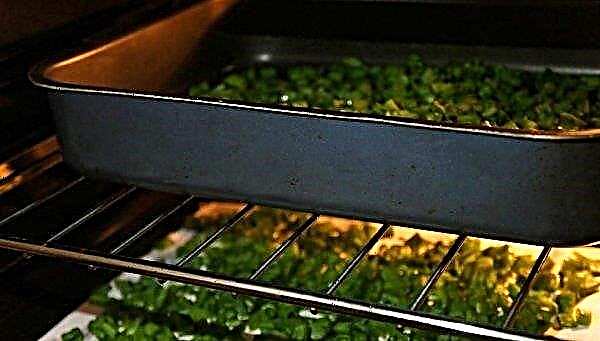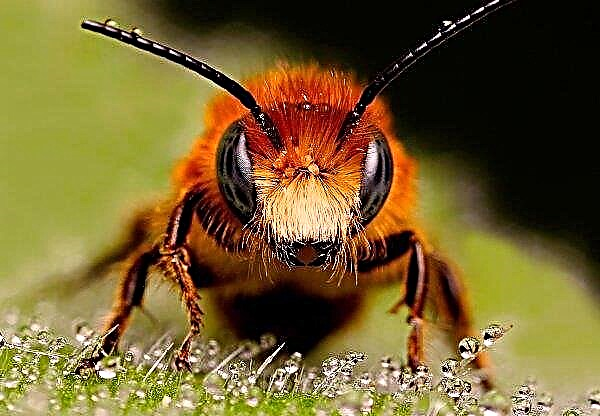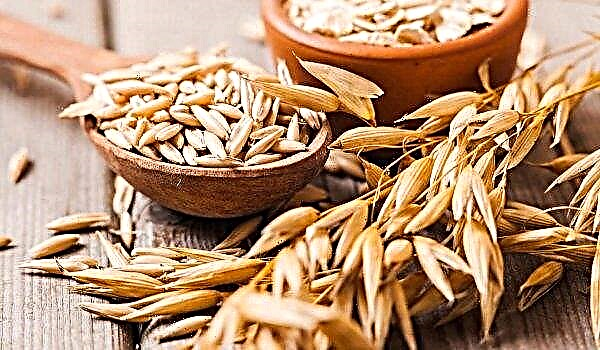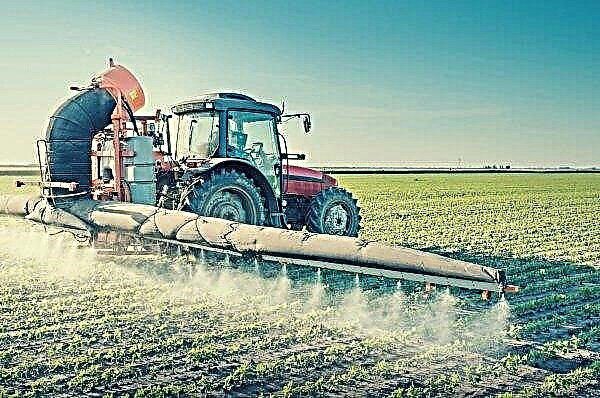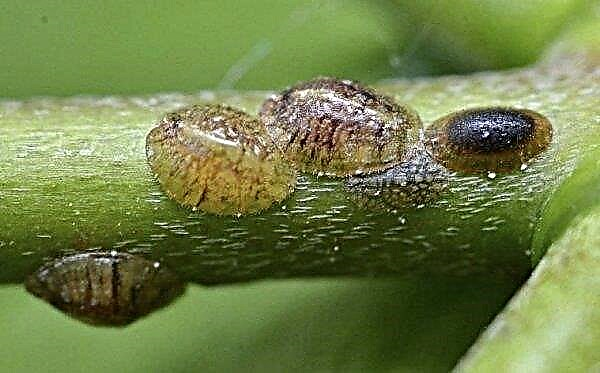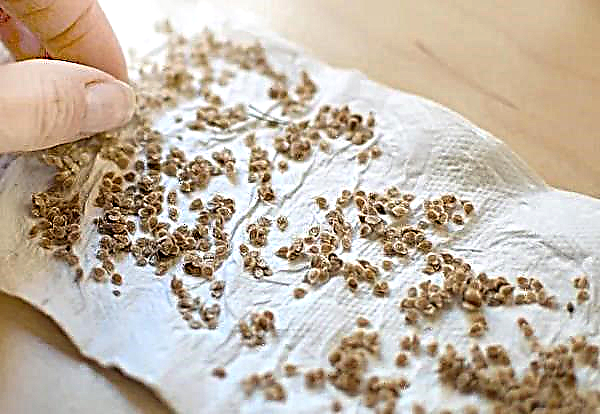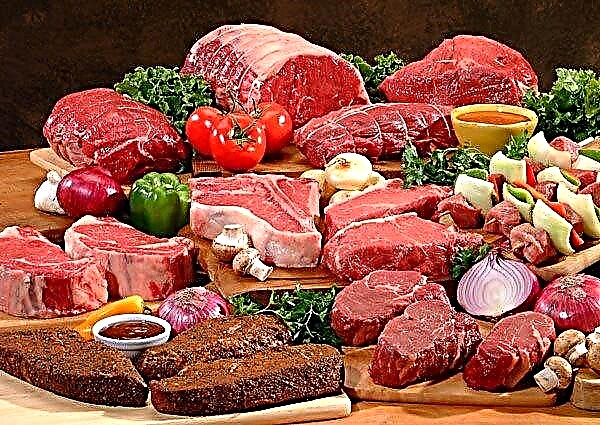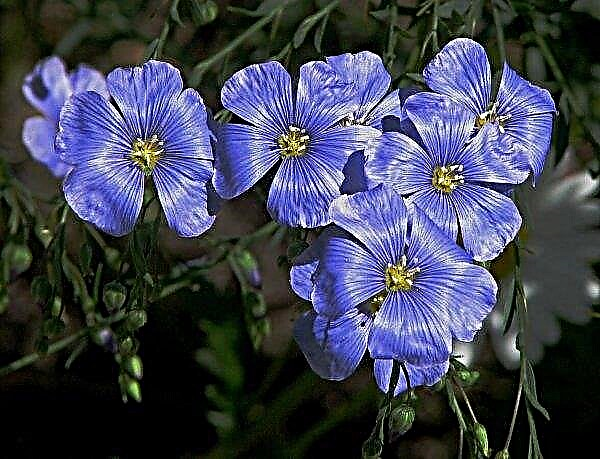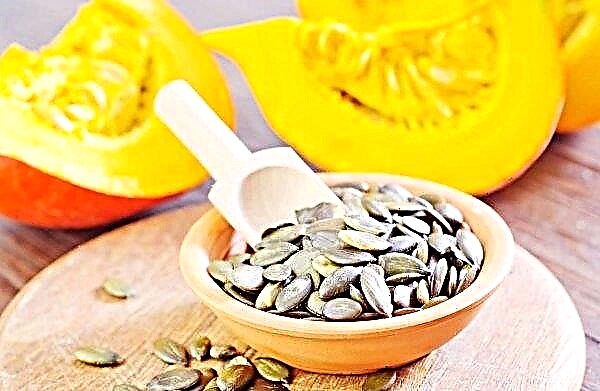Early potato varieties will always be in demand. Early potatoes are always a welcome dish in early to mid-summer. Let's get acquainted with the characteristics of the ultra-early variety of Juvel potatoes and the agricultural technology of its cultivation.
History of Origin
The Juvel potato variety is of German origin. It was obtained from Bavaria-Saat GbR and is suitable not only for private households, but also for industrial production. The variety is not registered in the state registry of Russia, but has already become popular.
Did you know? Boiled potatoes (not mashed potatoes), especially young ones, are good for diabetics. Early potatoes are rich in carbohydrates, which are slowly absorbed by the human body, which doesn’t particularly increase blood glucose levels.
Feature Description
The main characteristics of the Juvel potato variety are as follows:
- the tops are green and medium-leaf, mostly erect;
- blooms with light violet flowers of large (as for potatoes) sizes;
- ultra-early ripening - tubers can be digged after 50 days;
- yields, subject to agricultural practices and digging no earlier than 65 days, may amount to 750 kg / ha, and at an earlier harvest (on day 45) 400 kg / ha;
- resistance to golden nematode, potato cancer, Y virus, rot, leaf curling virus, medium resistance to late blight;
- each bush forms about 20 oval root crops weighing from 80 to 150 g;
- the peel is smooth, light yellow in color with superficial little visible eyes;
- the flesh is yellowish, does not darken, medium-boiled, simple taste;
- the starch content is 12-13%;
- tubers are best suited for frying, but can also be used to prepare other dishes (salads, soups, chips, boiled).
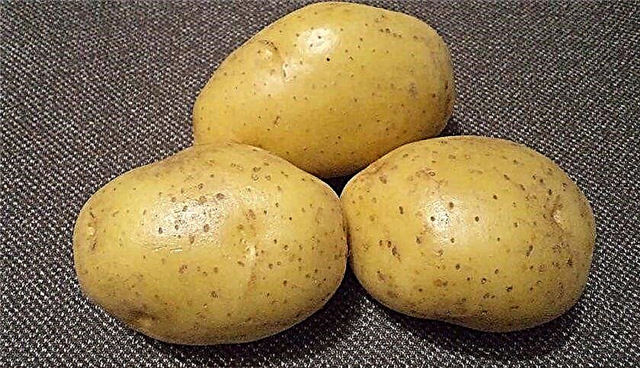
Advantages and disadvantages of the variety
- The undoubted advantages of the variety include the following:
- very early harvest;
- high productivity;
- resistance to many diseases of potato;
- good keeping quality;
- universality of use;
- the opportunity to receive two crops per year;
- suitability for mechanical cleaning;
- presentation of potatoes;
- good transportability.
- The disadvantages include:
- mediocre taste;
- exactingness to humidity.
Planting potatoes
It is important to plant potatoes correctly and choose the best period for this.
Optimal landing times
When planting early potatoes, one must take into account that the soil temperature should not be lower than + 8 ° C, but better if it is higher than + 10 ° C. Recommended temperature for planting tubers in the ground + 15 ... + 18 ° C. Usually time for planting works falls on the first ten days of May. Re-landing can be done in July.
Important! Do not rush and plant potatoes too early in unheated soil, as this situation weakens seedlings and provokes various diseases.
Soil requirements
The early potato planting area should be well lit by the sun. When choosing a site, crop rotation should be observed. Good predecessors are cucumbers, zucchini, winter breads and legumes. But nightshade plants (peppers, tomatoes, eggplant) are bad predecessors, as they are susceptible to the same diseases. Potatoes can be planted again at the same place only after 3 years.
The landing site should be prepared in the fall. Before frost, the selected area must be dug up and fertilized. Mullein (4 buckets per 10 m²) and superphosphate (1 glass per 10 m²) are perfect for this purpose.
If the soil was not fertilized in the fall, then top dressing is introduced into the pits when the tubers are planted. If organic matter is used, it’s only well-rotted.
Preparing planting material
An important point in the cultivation of potatoes is the preparation of seed material. For planting, choose healthy and intact tubers. They are placed in boxes of wood or plastic and transferred to a place well lit by the sun for germination. To do this, set the temperature in the room around + 19 ° C for the first 8-10 days. Then it is reduced to +12 ... + 15 ° C so that the sprouts do not stretch and are strong.
At the time of germination of potatoes, toxic elements are released that will prevent the appearance of diseases and pests. For additional protection of potatoes from various diseases, it is recommended to carry out treatment with “Prestige”, “Matador” preparations. Before planting, some gardeners dip potatoes into the ashes or pour ash into the planting holes.
Landing technology
To prevent the plants from obscuring each other, the row spacing is about 0.6–0.7 m. The distance between the plants in the row is about 30 cm. Pits are dug in the designated area, in which the tubers are sprouts up, and then they are covered with earth for 10 cm.
Did you know? Potato refers to vegetables that accumulate little nitrate. In 1 kg of young potatoes there is no more than 10–80 mg of nitrates, and in watermelons and melons their amount grows to 5000 mg per 1 kg.
With a close occurrence of groundwater, I recommend planting potatoes on the ridges.
Care Features
To get a good crop, it is necessary to ensure proper care for the crop, which consists of watering, fertilizing, cultivating, hilling, removing weed grass, and controlling pests and diseases.
Fertilizer
The key to a high yield is fertilizer application.
Professional gardeners give the following recommendations for fertilizing:
- First feeding carried out when sprouts appear. Such a solution is well suited for this - in a 10 liter bucket of water, 1 tbsp. a spoonful of urea and 0.5 l of rotted chicken droppings (or manure).
- Second fertilizer application produced during the formation of the buds. Prepare a solution - 10 liters of water take 1 cup of wood ash, 1 tbsp. a spoonful of potassium sulfate.
- Third feeding carried out during the period of active flowering. Such a solution is suitable for this purpose - 1 glass of chicken manure or dry manure, 2 tbsp. tablespoons of superphosphate.
Under the root of one plant is about 0.5 l of the above solutions for feeding.
During flowering, it is good to carry out foliar top dressing. For this purpose, spraying bushes with boric acid is carried out at the rate of 1 g per 1 liter of water.

Weed cleaning
When caring for planting potatoes, it is necessary to regularly remove weed grass, which draws on itself beneficial elements and moisture from the soil. To preserve moisture, as well as to protect the soil from drying out, a mulching process can be carried out. Sawdust, hay, humus, compost are suitable as mulch. Mulching is very important for those gardeners who cannot provide stable irrigation in the garden.
Watering
Proper watering has a big impact on the size of the tubers. Drought leads to the formation of small fruits. But excessive moisture can cause fungal diseases. Therefore, it should be watered about 2 times a week. It should be noted that the intensity of hydration is largely dependent on external conditions. So, in rainy weather, watering should be stopped, and in arid, increase up to 3 times a week.
Important! Watering should be done under the root, as droplets of water falling on leaflets can cause burns from sunlight.
14 days before harvesting, watering is stopped.
Loosening and hilling
After moistening the plantings, the soil around the potato bushes must be loosened. This will improve the flow of air, moisture and nutrients to the plant. When the bushes grow to 18–20 cm, it is necessary to spud them. Then this process is repeated after two weeks.
Hilling promotes the growth and strengthening of the root system, improves the flow of moisture and nutrients, promotes better growth and development of the plant.

Pest and Disease Control
Despite the resistance to disease, in violation of agricultural technology and adverse external conditions, the appearance of rot, late blight, spotting, as well as various insect pests. To prevent these problems, it is necessary to observe crop rotation, carry out preventive spraying with Fitosporin, dig the soil for the winter, as well as inspect the plants for the first signs of a disease or pests.
Potatoes are most often affected. late blight. A sign of the disease is the appearance of brown spots on the leaves and stems. In this case, the bushes should be sprayed with copper sulfate or Bordeaux liquid.
When wireworm, Colorado potato beetle chemical treatments “Prestige”, “Karate”, “Tabu” are used. Upon detection at the site the little bears use granules of the Medvetox preparation. They sprinkled holes on landing, and then the entire plot. After a while, as this pest is detected, this treatment is repeated.
20 days before the collection of tubers, any chemical treatments must be stopped.
Did you know? If young potatoes are kept in water for half an hour before cooking, this will reduce the nitrate content by almost 25%.
Harvesting methods and storage
The first digging for young potatoes can be done after 45 days from the emergence of seedlings, but such root crops are not stored. Harvesting for stocks can be started after 65–70 days from the moment of planting in the soil, that is, already from the middle of summer. The fact that the fruits have ripened is signaled by drying bushes, in which the leaves begin to turn yellow and fall. The Juvel potato variety is suitable for mechanized harvesting.
The harvested crop needs to be sorted out, sorted out spoiled vegetables - they are not suitable for long-term storage. If heavy rains took place on the eve of the harvest, then the tubers should be air dried. Then, for convenience, vegetables are placed in boxes and transferred to a storage room. It should be dark, cool and well ventilated. Recommended temperature range is around + 3 ° C.
Potato possesses “Juvel” possesses good keeping quality (94%). For storage it is better to send the crop from the second planting.
From an ultra-early variety of Juvel potatoes, you can harvest two crops a year and harvest it for the winter. He is highly productive, unpretentious and resistant to many diseases.


